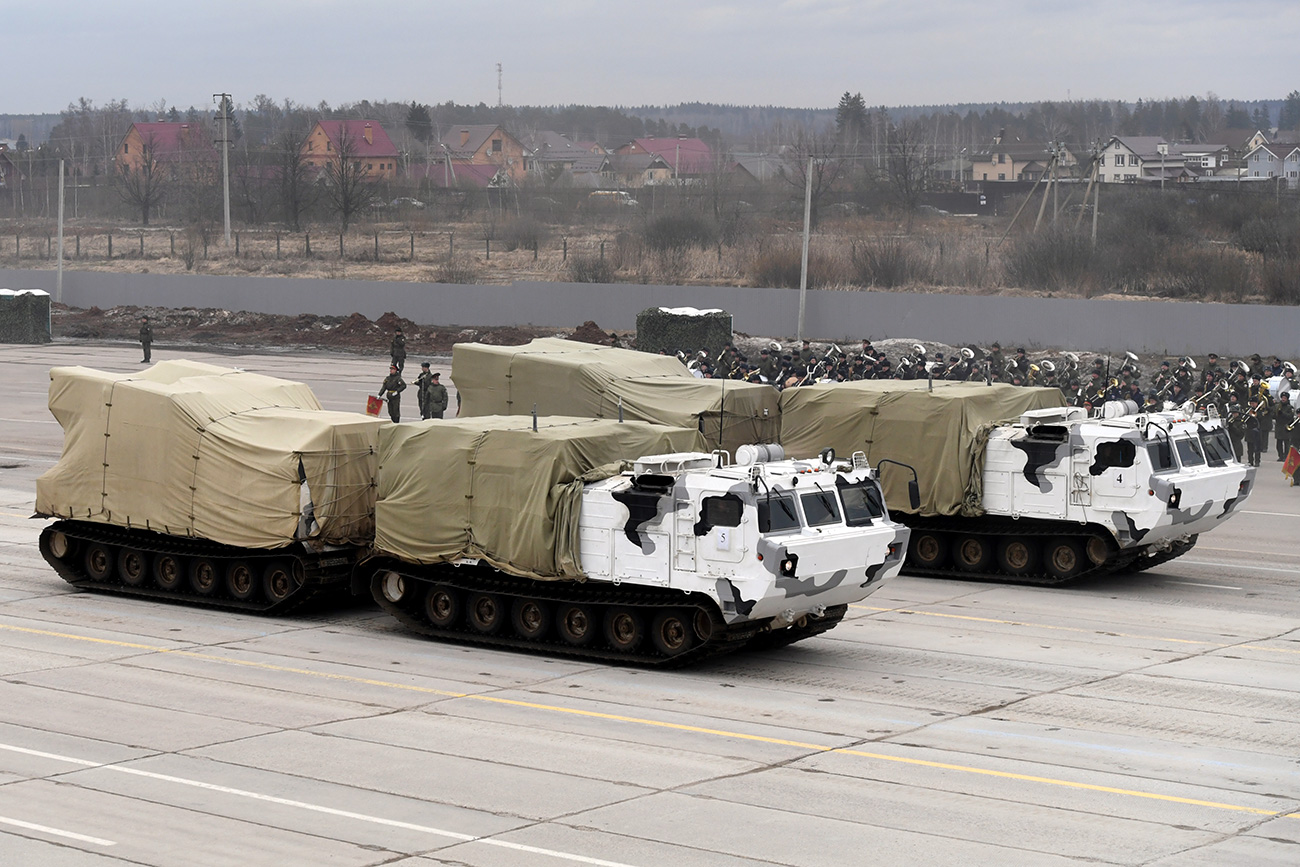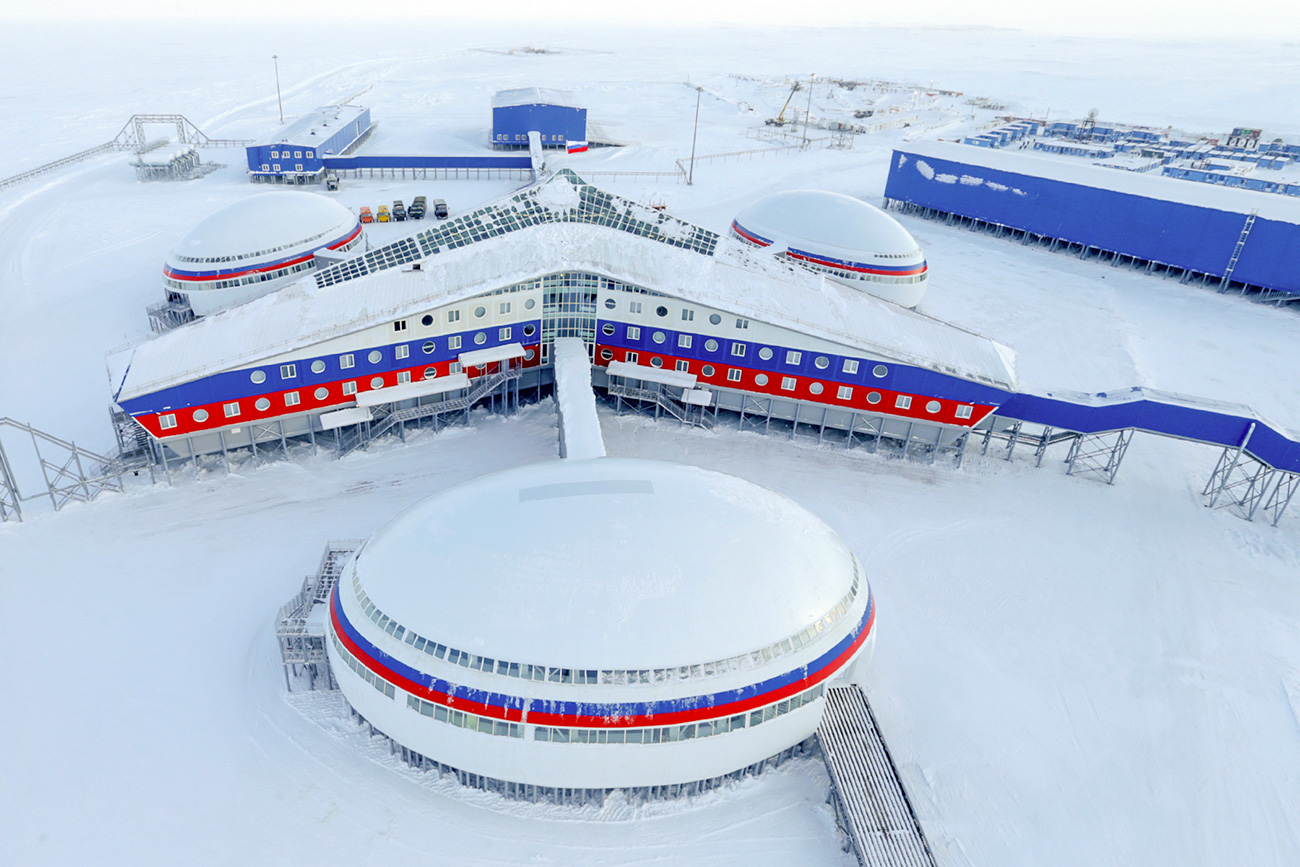Cold combat: No fighting in Arctic but Russia to show specialized weapons

Pantsyr-SA (Arctic), an air defense missile-gun system, seen at the Victory Day joint training drills of a combined parade unit, mechanized column and lineup of aircraft.
Evgeny Biyatov/RIA NovostiIn addition to the already well-known Armata tanks and S-300 air-defense systems, the Russian military will demonstrate new hardware for Arctic conditions at the Victory Day parade on May 9.
"For the first time the general public will see air defense military hardware such as the Tor-M2DT anti-aircraft missile system and the Pantsir-SA combined anti-aircraft missile and artillery system, as well as support vehicles," said Ground Troops Commander-in-chief, Colonel General Oleg Salyukov, during a meeting with journalists in early April.
This equipment is capable of defending Russian territory in difficult Arctic conditions where roads do not exist and the vast distances make proper supply lines nearly impossible.
Until now, the Arctic has never been a theater of military operations, but possible battles in the tundra and among the glaciers would be very difficult due to the region's inhospitable climate.
The biggest problems in the Arctic are off-road maneuverability for vehicles and their ability to function in low temperatures. First, winter temperatures in the Arctic can drop to -60 degrees Celsius (-76 Fahrenheit). In such conditions conventional equipment stalls, parts seize up as lubricant thickens, rubber becomes brittle as glass and electronics fail.
Second, the local terrain also plays a role. Huge boulders and ice-free swamps can be hidden under the snow.
An ATV 'knight'
All-terrain vehicles adapted to Far North conditions have been developed and are now in production. One of the most interesting is the DT-10 Vityaz ("knight" in English).
 "Vityaz" caterpillar carrier at the Omsk 2005 international exhibition of military equipment. / Photo: Valery Gasheyev/TASS
"Vityaz" caterpillar carrier at the Omsk 2005 international exhibition of military equipment. / Photo: Valery Gasheyev/TASS
Designed 30 years ago, the caterpillar track Vityaz is constantly modified and consists of two compartments. On one hand, this increases load-carrying capacity to 10 tons and, on the other, it allows the vehicle to reach a speed of 24 mph which is quite good in Arctic conditions.
The latest innovation by designers allows Vityaz to be an armored fighting platform suitable as a weapons carrier.
Russian designers have also created a new ATV with two-meter diameter wheels that have special tires to significantly reduce pressure exerted on the ground. This allows the vehicle to easily navigate deep snow, swampy ground and frozen river beds. All models are designed to stay on the move for at least three days, which was demonstrated in several exercises by Russian armed forces in the Arctic.
Where are Russia's Arctic bases?
A possible battle for the Arctic has shown signs of erupting as countries bordering the region eye its abundance of natural resources. Russia's reaction has been to strengthen the state's presence in the Far North, for example, old Soviet military bases are replaced with new ones equipped with the latest technology.
The largest bases - Northern Clover and Arctic Trefoil, located in the Novosibirsk Islands and in Franz Josef Land, respectively - are the most northerly permanent settlements in the world and were built according to a special design. Several hundred servicemen are based there and have everything they need to survive for a year and a half in isolation from the "mainland."
 Russia's Arctic Shamrock military base on Alexandra Land of the Franz Josef Land Archipelago. / Photo: Vadim Savitsky / RIA Novosti
Russia's Arctic Shamrock military base on Alexandra Land of the Franz Josef Land Archipelago. / Photo: Vadim Savitsky / RIA Novosti
These bases are starting points for northern expeditions by the Russian military. Dozens of items of hardware and large reserves of fuel and food are stored there, but the bases' main purpose is radar surveillance and contact with military aviation that monitors the skies over the Russian Arctic.
Future plans call for establishing permanent airfields, stationing anti-ship and anti-aircraft systems at the bases and the fine-tuning of a communication system with submarines. If all this is achieved, the Russian Far North will be protected by a reliable shield on land, in the air and under water.
Read more: Arctic animals help keep Russian troops moving in icy wastes
If using any of Russia Beyond's content, partly or in full, always provide an active hyperlink to the original material.
Subscribe
to our newsletter!
Get the week's best stories straight to your inbox